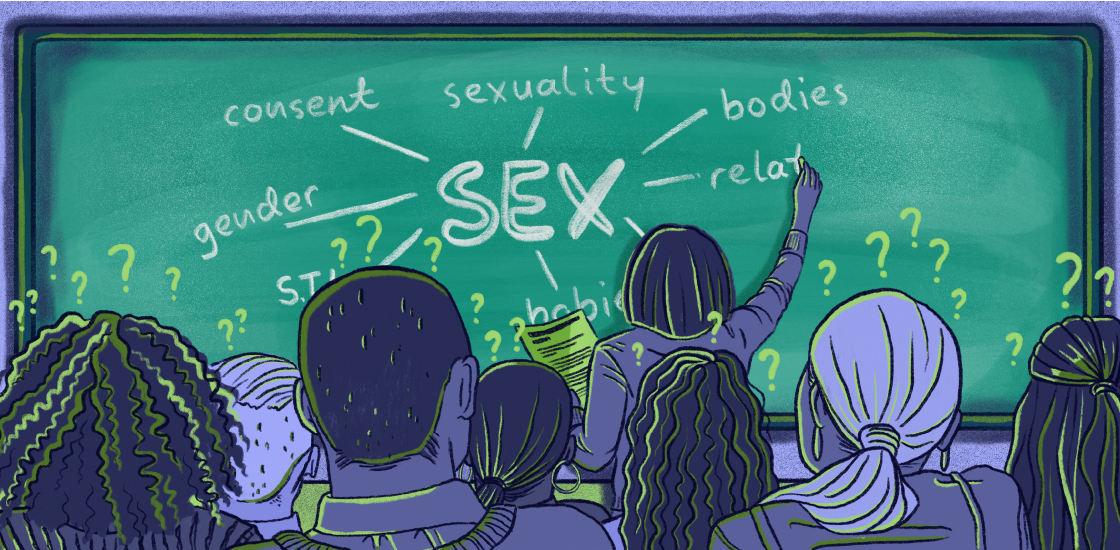

Aliyah Williams
Copy Editor
With the recent overture of Roe v. Wade, reproductive issues have been frequently circulating in the media. Yet while access to abortion is still being protected in Pennsylvania, adequate education about sexual health is paradoxically not.
The United States has the highest teen pregnancy rate than that of most other developed countries. Its longstanding moral disputes about the provision of sexual health education in schools have arguably contributed to both the high pregnancy and sexually transmitted disease (STD) rates among teenagers.
As of 2020, there were 4,895 teen births in PA, not including pregnancies that were terminated by abortion or ended in a miscarriage. Although these rates have been steadily declining since the early 2000s, an estimated 12.6 out of 1,000 teenagers get pregnant in Pennsylvania, with 14% of these births not resulting in a first child.
Teen pregnancy encompasses a multitude of medical, economic and social risks. Only 50 percent of teen mothers earn their high school diploma, compared to the 90 percent graduation rate among women who do not give birth in their youth. Medically, teen mothers are more likely to give birth prematurely to underweight infants and have higher rates of stillbirth
and neonatal mortality.
According to data compiled by the Centers for Disease Control and Prevention (CDC), the children of these teenage mothers have more health problems, are more likely to have low academic achievement, be incarcerated, give birth as a teenager and face unemployment.
However, these risks are not openly discussed in schools, as abstinence-only programs are the only ones that are encouraged. The mystery of sex can often draw intrigue from young people, enticing and exciting them without them knowing about it.
Without knowing the possible consequences, it is dangerous to engage in sexual activity, something that schools can attempt to prevent through education.
There are also statistical disparities that exist among the racial and ethnic populations of teen pregnancies.
In PA, Hispanic, multiracial and black teenagers have higher birth and pregnancy rates than other ethnic groups. According to data from the United Health Foundation, 32.4 out of 1,000 teen Hispanic girls in PA are likely to get pregnant, compared to the national average of 23.5. 20.0 out of 1,000 multiracial girls are likely to give birth, once again above the national average of 15.5.
Finally, 23.1 out of 1,000 black teenagers are likely to get pregnant, sitting just below the national average of 24.2. Black Girls and Sexuality Education released a report in 2019 that analyzed the socioeconomic,
racial and educational factors that contributed to these discrepant rates in Allegheny, PA.
The report’s findings stated that “access to comprehensive sex education in Allegheny County is inconsistent and non-systematic,” and that the “type of sexual education offered varied based on the ethnic make-up of schools.”
It also found that within a concentrated area of Allegheny PA, 34.7 out of 1,000 black teens were likely to get pregnant compared to the rate of 4.7 white teens.
As a result of the report’s conclusion, there is an evident need for education among young people concerning sexual activity, especially in having an intense focus on eliminating biases when teaching sexual education to diverse populations.
Teen pregnancy is not the only negative effect of an insufficient sexual education curriculum in the state. The prevalence of STDs among young people also correlates to the lack of available sexual education for youth.
STD rates are a cause for concern in PA, especially in the city of Philadelphia. While socioeconomic and cultural factors play a role in the data, Philadelphia youth are around 3-5 times more likely to have an STD than children in other parts of the United States.
Teenagers who have STDs are subject to various medical issues and social stigmatizations. Some of the various health complications that arise from STDs include infertility and cancer.
Similar to teen birth rates, STDs have also been shown to cause low birth weight and premature babies, and these conditions may also be passed onto the baby at birth.
Currently, there is no requirement for PA schools to teach a medically accurate curriculum. The state also does not mandate sexual education, consent, and contraceptive methods to be taught in schools.
PA attempted to pass a mandate in the year of 2019, but the COVID-19 pandemic hindered the process, causing the bill to still remain at a standstill as of 2022. The state’s longstanding debates about the morality of teaching sexual education to youth have undoubtedly affected teen pregnancy and STD rates.
Research reported by Sex Ed For Social Change stated that 95.3 percent of PA secondary schools taught about the benefits of abstaining from sex, while lower statistics were reported about sexual education. Only 80.6 percent of schools, for example, taught students about contraceptive methods, and only 59.3 percent taught students how to correctly use a condom.
These statistics were typically reported higher in grades nine through 12, while grades six through eight were significantly lower. A direct correlation exists between modern education efforts and teenage sexual health, as both
pregnancy and STD rates among young people have been steadily decreasing as internet access has risen.
In order to further perpetuate these numbers, PA should implement strict and insightful sexual health education mandates so that children can get this information from a reliable and medically accurate source rather than relying on the oftentimes unrealistic expectations of the internet.
Research from Common Sense Mediaindicates that 73% of teenagers aged 13-17 have engaged in watching pornography, an activity that can often create unrealistic expectations about sexual relationships. By implementing medically correct sexual education programs, it would be possible to correctly educate students about relationships, and the correlation between love and sex.
It is evident that in order to persistently lower the prevalence of pregnancy and STDs among PA teens, the states must increase the quality and amount of sexual education programs that they are
offering.
Email Aliyah at: awillia131@live.esu.edu
